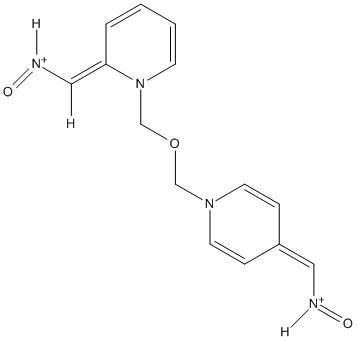HS-3
General
Type : Oxime, Bisoxime, Bispyridinium
Chemical_Nomenclature : oxo-[[1-[[(2E)-2-(oxoazaniumylmethylidene)pyridin-1-yl]methoxymethyl] pyridin-4-ylidene]methyl]azanium\;dichloride
Canonical SMILES : C1=CC(=C[NH+]=O)N(C=C1)COCN2C=CC(=C[NH+]=O)C=C2.[Cl-].[Cl-]
InChI : InChI=1S\/C14H14N4O3.2ClH\/c19-15-9-13-4-7-17(8-5-13)11-21-12-18-6-2-1-3-14(18)10-16-20\;\;\/h1-10H,11-12H2\;2*1H\/b14-10+
InChIKey : WAGVRRUYYSDCCC-YZEJZXAXSA-N
Other name(s) : 2,4'-Diformyl-1,1'-(oxydimethylene)dipyridinium dichloride dioxime, Pyridinium, 2,4'-diformyl-1,1'-(oxydimethylene)di-, dichloride, dioxime, 2-((Hydroxyimino)methyl)-1-(((4-((hydroxyimino)methyl)pyridinio)methoxy)methyl)pyridinium dichloride
MW : 359.2
Formula : C14H16Cl2N4O3
CAS_number : 25487-36-9
CID PubChem :
InChIKey UniChem :
Iuphar :
Wikipedia :

Target
Structure : No structure
Families : No family
References
No reference